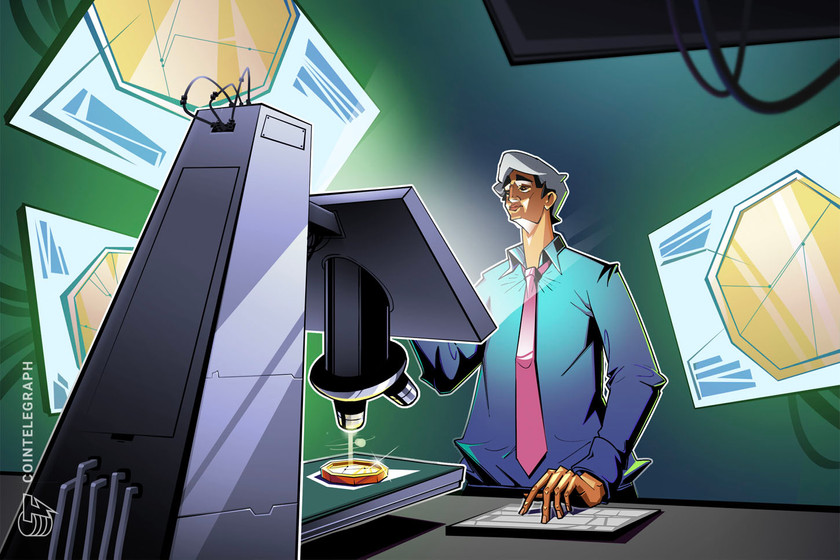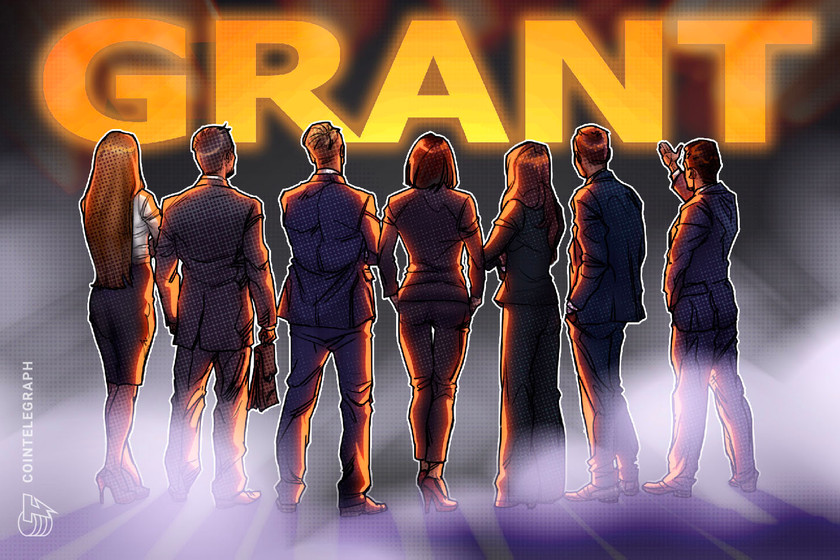
Fool me once, shame on you. Fool me twice — shame on me. Fool me three times... or four? How a community-focused project regained its footing, where others stumbled and fell.
THORChain hasn’t had an easy year. After three exploits in the space of a month during the summer the protocol’s native token (RUNE) took a beating, plummeting from all-time highs over $20.00 in May to a low of around $3.50 in late July.
Billed as a way to exchange crypto assets across different blockchains without an intermediary, the protocol disabled swaps completely as it looked to harden the network against exploits. With the relaunch of Ethereum swaps in late October, however, THORChain’s recovery was virtually complete — and the price of RUNE was within striking distance of the $20.00 mark again.
And then there was the THORSwap public sale.
THORSwap, a decentralized exchange powered by THORChain, had a successful initial capped sale that was oversubscribed by 198%, as community members stumped up a maximum of $300. But a second uncapped sale went badly wrong, as bots front-ran the Initial Dex Offering (IDO) and THORChain's own treasury seized tokens before the public was even able to access the app.
Yet just one day later, a dip in the price of RUNE appears to be reversing, and previously-disaffected community members on Twitter are singing the praises of the THOR team. So how did THORChain succeed where countless other DeFi projects have failed to recover following hacks or exploits?
Why, following the three exploits, did some wallet holders actually donate Ether (ETH) to the THORChain protocol to help cover losses? And why, following a botched IDO, is THORSwap's Twitter account receiving comments like "This is real @THORChain . They know how to be with the community. They know how community should be treated."
The answer, according to some members of the community, lies not only in the fact that there is a deep commitment among participants to the decentralized ethos of the project; or even that the mostly anonymous developers and managers behind the THOR ecosystem are as diligent about community development as they are about technical implementation.
It’s about a virtuous circle of aligned incentives between the developers, the managers, the moderators, and the community that creates a genuinely antifragile economic system.
Following the IDO, THORSwap and THORChain rapidly addressed the community outrage at the mistakes that prevented many supporters from participating in the sale.
In a post mortem the THORSwap team said that "The $THOR token launch on THORChain was, frankly, a bad experience for everyone involved. We have built up trust over the years, and we understand it can easily be broken from one event like this. Many lessons were learned and we hope to regain your trust."
But rather than simply apologizing, the THOR team went significantly further — with the THORChain Treasury at first promising to donate 10% of its tokens back to the liquidity pool, and later reallocating its entire $11.25 million THOR position to be distributed between those liquidity providers who were unable to secure tokens.
11m$ donated to $thor LPs.@THORChain made everything right.
— THORchain.BULL (@THORmaximalist) November 4, 2021
I wish I didn’t stay on the sideline :P
Thanks to the team!!! pic.twitter.com/im4MCsQszc
THORSwap Admin, an anonymous contributor to the protocol, told Cointelegraph that "THORSwap — the products, ideas and contributors — was literally born from the community. So we took it personally when the launch didn’t meet the community’s expectations. We worked feverishly to offer a solution that would suit as many people as possible.”
In addition, the THORSwap team has announced plans for an additional airdrop to prove that "We love the THORSwap and THORChain community and are absolutely committed to you."
But even apologies and 'free money' have their limits. Which is why THORSwap has been developing a passionate community for almost a year. “We have over 18,000 members in our Discord channel,” explains pseudonymous representative CrowdPleasr, “And we still provide 24/7 one-to-one support whenever a community member has a question. Our response time averages under 30 minutes. And I don’t think any other DeFi project has worked that hard to provide service to its supporters.”
Moderating Discord channels is a challenge that has stumped many crypto projects — they often devolve into cesspools of spam and phishing expeditions — but THORSwap’s lead moderator and Product Manager, ‘The Bull’, explains that the overwhelmingly positive mood in their channel has been fostered by the transparency and continuous communication of the team. “We’ve always been the first to make announcements about the hacks,” they explain, “And we’ve announced every phase of the recovery… so the community feels comfortable talking with a member of the team.”
The team at THORSwap has been deeply hands-on with moderation, actively recruiting and paying experienced community mods rather than relying on volunteers to keep the peace.
Beyond their attempts to create a safe environment for users in online communities, THORSwap has introduced multiple product lines that specifically reward positive contributors to the project; a trend that has accelerated as non-fungible tokens (NFTs) become an increasingly popular (and let’s face it, inexpensive) way to create loyalty.
The THORChads DAO has its own website, described as “...a LAUNCHPAD and… the primary destination for all of THORChain’s creative projects” where users who satisfy various criteria can “prove their Chadness'' and take advantage of rewards such as avatars, NFTs, airdrops, and increased allocations in the recently-concluded public sale. It will also act as a launchpad for developer grants to further the development of the ecosystem.
(While the online etymology of ‘Chad’ has connections to the incel world and aggressively alpha male characteristics, it has been adopted by the cryptosphere to specifically relate to traders who are bold or fearless. Not to mention, Chad Barraford is the technical lead on THORChain and one of its most visible proponents.)
CrowdPleasr is particularly excited about the charitable aspect of THORSwap, which he describes as “a chance for the community to decide where we should allocate 5% of revenues, because very few people are doing this and we feel it’s important to take some of the gains outside of this crypto bubble we live in.”
In all, around 75% of THORSwap’s revenues are expected to find their way back to the community, explains THORSwap Admin. He describes the success of the project as being predicated on the theory that aligning incentives will lead to greater scalability and a ‘trading black hole’ wherein discounted trading fees lead to more volume, which leads to greater revenue, which leads to more value accrual to the community, which leads to further discounts in trading fees…
All of these aligned incentives have had a tangible outcome. Community support for the public sale led to the project securing over 5,000 participants in the first round of the public sale, with 100% of required funds committed in the first 17 minutes which CrowdPleasr noted was conducted “at the same price as private investors.”
And despite the missteps in the execution of the IDO, the community appears to be satisfied (for the most part) with the solution the team has created.
As just one component in the THORChain world, THORSwap is a microcosm of the wider support the protocol has enjoyed since inception.
Erik Voorhees, a vocal advocate of community-derived power who founded the recently-decentralized ShapeShift platform, describes THORChain as “...such a leap forward that most haven’t processed it yet. There is nothing else remotely like it available.”
And Terraform Labs founder Do Kwon has suggested that “THORChain is interesting because I believe the future is going to be interchain and interconnected. What THORChain has the potential of bridging, is it can bring Bitcoin in — which is huge.”
Even so, there is truth in the notion that the best tech doesn’t always win. Betamax vs. VHS is the classic example of a walled garden with superior tech (Sony’s Betamax) that fell to a competitor whose ecosystem offered more attractive products to consumers, as when JVC’s VHS built stronger relationships with movie companies.
We see the same phenomenon today — Bitcoin is not the most technologically-advanced cryptocurrency, and has numerous drawbacks that would kill any new project instantly. But it has a community of developers, supporters, and integrations that provide it with what has been, at least so far, an impregnable advantage. The community may well be the primary reason why Bitcoin Cash isn’t Bitcoin today.
Despite being technically advanced, THORChain and its ecosystem projects have identified that in the rapidly expanding cryptoverse, technology alone isn’t enough. Tech can be copied, improved upon, made obsolescent… but communities and systems survive when interests are aligned.
As Barraford, a core developer on the protocol, noted in a short video in which he compared the aftermath of the THORChain exploits to the effects of the Mt. Gox hack on Bitcoin, those incentives go both ways. “This community is, I mean, obviously this community is absolutely amazing. Y’all just have diamond hands. I completely appreciate everybody sticking around and just continuing to support the project. That was crucial for me to keep putting all my energy… to just get that support from you all.”
And that’s why THORChain is still here, while lesser DeFi projects have fallen by the wayside when faced with exploits.
Aligned incentives are a core innovation and promise of the cryptocurrency experiment. And when executed properly, as exemplified by the pragmatic builders in the decentralized THOR ecosystem, they can create antifragile economic systems that recover quickly from black swan events like a hack or a front-run IDO.
Which, after the financial crisis of 2008, should be a desirable innovation indeed.












